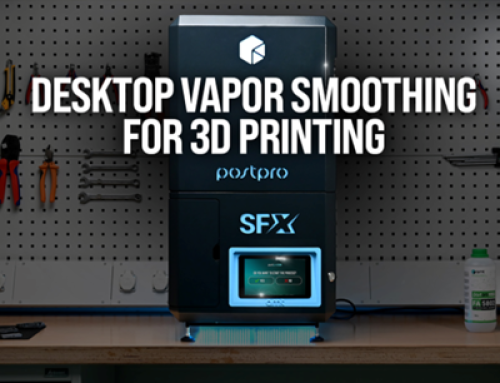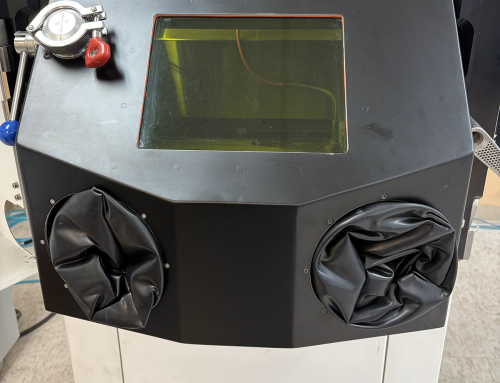
What’s in your toolbox? For Cyclone Racing, an automotive racing team from Iowa State University (ISU), it’s 3D printing. These students are discovering the benefits of additive manufacturing while having fun competing in the famous Society of Automotive Engineers (SAE) International Formula car competition.
In the Formula SAE competition, students are instructed to design, build and then test their open-wheel racecar, which will then be raced against other collegiate teams.

Students 3D printed the intake assembly with the throttle cable directly on top of it.
ISU student competitors are pushing the limits of collegiate racing by making the manufacturing process a whole lot simpler. This year it means that the Iowa team created their best Cyclone yet – the CR-21 – using design for 3D printing. A Stratasys Fortus 450mc 3D Printer with ULTEM1010 3D printing material was chosen; ULTEM1010 especially for its thermal and chemical properties and superior strength.
So, what did students consider before 3D printing?
What will the complexity of the car be?
What will the optimal weight be?
What types of force will act upon it?
With these criteria taken into consideration, the students decided to 3D print three components for the Cyclone racer: the intake, the dashboard and the heel cups.
3D Printed Design Maximizes Airflow

The CR-21 Cyclone Race Car designed using Stratasys 3D Printing
The intake is important because in order for the engine to create more horsepower, it needs smooth and consistent airflow. As the speed of the vehicle and the rotations per minute of the engine increase, this becomes harder to maintain. The internal geometry of the 3D printed intake allowed it to include a smooth and gradually sloping inner wall, making the airflow much smoother than if the intake were created by more conventional means.
3D printing the intake saved the students a great deal of time when it came to the manufacturing process. The intake port, connected to the intake, takes in all air that flows through the engine. Before 3D printing was accessible to Iowa State’s Cyclone racing team, the intake consisted of many aluminum parts that had to be turned, milled, cut and welded all together.

The 3D printed heel cups provided the driver with a safe place to rest his feet while driving.
During the intake’s design process and the injection molding of the wings, the team applied FEA (Finite Element Analysis) to simulate the forces and stresses that are applied to a part during normal operation. This helped them to determine where material could be added or removed from the design. 3D printing made it easy to alter the density and thickness of the material in each part’s geometry in order to make sure the part was both strong and light, without adding any extra complexity to the manufacturing process.
In addition to the intake, the dashboard and heel cups were 3D printed. If they had been created using conventional manufacturing techniques, development would have been time-consuming and more costly. They could have also been produced using 3D printed molds or tools, but 3D printing the final parts directly was faster and more economical. The students used strong, yet affordable, ABS material for these parts.

Stratasys 3D printed dashboard attached to the chassis is used to support all of the switches and buttons the driver needs.
What did 3D printing enable the Cyclone team to do that they couldn’t do before?
- Create a lighter, faster and less complex vehicle.
- Make the car’s walls thinner, decreasing the weight.
- Assemble fewer individual components, saving time and building stronger parts.
- Increase performance by manufacturing complicated internal geometries in a way no other technology would allow.
To summarize, 3D printing allowed the team to build a better, lighter and, most importantly, faster car, which gave them time to focus on other important things, like having more time to test the CR-21. The brief video clip below shows the car in action.








Leave A Comment